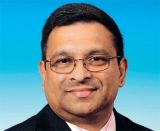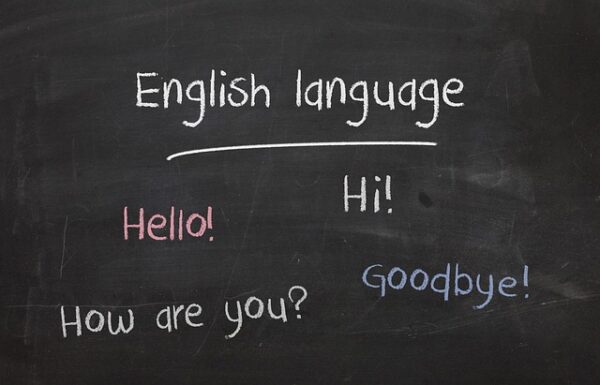Mind your language. It divides! – By Aubrey Joachim

 Nineteen Fifty-Six was a watershed moment in the history of Ceylon – now Sri Lanka, when the government of S.W.R.D. Bandaranaike passed the Sinhala Only Bill as the first act of the new government of a leader who at the time could hardly speak the Sinhalese language. The Christian educated ‘silver-tongued-orator’ of Oxford had passed his senior Cambridge examinations with distinctions in English, Latin, Greek and French. No Sinhalese for this aristocratic son of Ceylon. However, at an election rally in Polonnaruwa in late 1955 Solomon West Ridgeway Dias (SWRD) Bandaranaike promised the masses ‘Sinhala – in twenty-four hours’. Thus the division began and the domino effect still goes on – wherever in the world Sri Lankans congregate.
Nineteen Fifty-Six was a watershed moment in the history of Ceylon – now Sri Lanka, when the government of S.W.R.D. Bandaranaike passed the Sinhala Only Bill as the first act of the new government of a leader who at the time could hardly speak the Sinhalese language. The Christian educated ‘silver-tongued-orator’ of Oxford had passed his senior Cambridge examinations with distinctions in English, Latin, Greek and French. No Sinhalese for this aristocratic son of Ceylon. However, at an election rally in Polonnaruwa in late 1955 Solomon West Ridgeway Dias (SWRD) Bandaranaike promised the masses ‘Sinhala – in twenty-four hours’. Thus the division began and the domino effect still goes on – wherever in the world Sri Lankans congregate.
Language is defined as a means of communication between humans by way of speech, writing or gesture. It is ironic that while language is a medium for bringing about a common understanding it can also be such a divisive platform. While there are over 7,000 languages in the world today, Tamil is understood to be one the oldest languages with its origins dating back some 5,000 years. According to Britannica the Sinhala literary language has existed for nearly 800 years. Modern English has been around since the fifteenth century and is around 600 years old. However according to the Lingua Language Center, English language is now the most spoken language in the world with over 1.12 Billion followed by Mandarin with also over 1 Billion speakers. Even Portuguese – a language of colonial Ceylon at one time is the 9th most spoken language in the world. It is estimated that Sinhalese is spoken only by about 19 Million people – mostly in Sri Lanka while Tamil is spoken by about 83 Million people spread across a number of countries. It cannot be denied that the popularity of English is driven by business, commerce as well as global scientific endeavours.

Societal division on language grounds began in Sri Lanka in the late 1950’s when strict rules as to the medium of education was introduced. Friends were divided – one studying in the English medium and the other in Sinhalese or Tamil. Even families were divided with older siblings educated in English and the younger ones in another medium because of their dates of birth. However, the language of choice of the upper class Sinhalese elite was English and even though 6 hours in the classroom was in Sinhala the rest of their lives continued in an English environment. The most blatant division was at the level of the masses with only a minority enjoying the benefits of an English education and hence future better opportunities – unless family wealth contributed to an overseas education The majority of the population therefore was relegated to a lower level of knowledge acquisition. Hence many otherwise intelligent students – especially in the villages were disadvantaged and with that the country as a whole suffered. This is clearly seen in the standards of governance and public administration. In the seventies the powers that be went a step further doing away with the English medium entirely. Overall standards plunged and gradually English competencies across the board deteriorated. Even though some ‘overseas schools’ emerged and began to provide English education the quality was found wanting due to the lack of English teaching competencies. Proof lies in the product output. Of late some public schools are also offering an English medium education but face the same problems of lack of competencies This situation still continues and there is a concerted effort among some politicians as well as professionals and academics to push for countrywide English education with the choice left to parents.
For followers of the happenings in the Sri Lankan parliament an interesting facet to note is that it must be the only legislative chamber in the world where debate is conducted in three languages – Sinhalese, Tamil and English – with even some tri-lingual politicians holding sway. Here too it is patently obvious that the language divide comes out strong and clear. It is also a known fact that the children of some in the chamber are being educated overseas in English while the children of the masses are disadvantaged.
Fast forward 70 years from 1956 and cross continents to countries such as UK, Canada, USA and Australia where significant numbers of Sri Lankan diaspora have settled and the dominoes that started falling in 1956 still continue to tumble. Groups still continue to be divided on language lines. Circles of friends, social groups, old school associations and even religious associations are divided on language lines despite having the opportunity of wiping the slate clean and uniting on a common language platform. Ironically family divisions still persist between Sinhala educated parents and their now English educated children giving rise to multi-lingual households. Interestingly a new phenomenon is shaping and influencing a change that will certainly swing the pendulum perhaps permanently. With the children of first generation Sri Lankan migrants to these countries increasingly finding non-Sri Lankan life partners it leaves no option but for communication between children, grand-children and in-laws to be in a common language – most often that language is English. Thus will the domino train – at least among the Sri Lankan diaspora come to a halt? It seems all but certain. Time will tell.
Aubrey Joachim is a Sri Lankan expat who is an Australian citizen and is a Past Global President of the Chartered Institute of Management Accountants (CIMA) UK.







